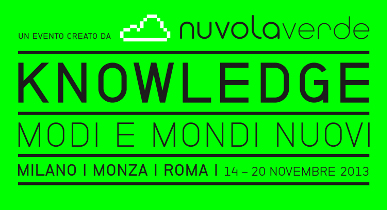13/11/2013 - Lectures, Events
Milan, Nov. 14th, at "Knowledge, modi e mondi nuovi", Workshop on 3D printing in collaboration with Autodesk Pico

 Reading time: 1 minute
Reading time: 1 minuteKnowledge is an event organized by Nuvola Verde in Milano, at Science Museo. School of Robotics is invited by Autodesk distributor in Italy, Pico Technology and Solutions, to held an hour seminar on 3D printing.
3D PRINTING
Additive manufacturing or 3D printing is a process of making a three-dimensional solid object of virtually any shape from a digital model. 3D printing is achieved using an additive process, where successive layers of material are laid down in different shapes.[2] 3D printing is also considered distinct from traditional machining techniques, which mostly rely on the removal of material by methods such as cutting or drilling (subtractive processes).
A materials printer usually performs 3D printing using digital technology. The first working 3D printer was created in 1984 by Chuck Hull of 3D Systems Corp.[3] Since the start of the 21st century there has been a large growth in the sales of these machines, and their price has dropped substantially.[4] According to Wohlers Associates, a consultancy, the market for 3D printers and services was worth $2.2 billion worldwide in 2012, up 29% from 2011.[5]
The 3D printing technology is used for both prototyping and distributed manufacturing with applications in architecture, engineering, construction (AEC), industrial design, automotive, aerospace, military, engineering, civil engineering, dental and medical industries, biotech (human tissue replacement), fashion, footwear, jewelry, eyewear, education, geographic information systems, food, and many other fields. It has been speculated[6] that 3D printing may become a mass market item because open source 3D printing can easily offset their capital costs by enabling consumers to avoid costs associated with purchasing common household objects. From Wikipedia
Official Website
Pico's website

